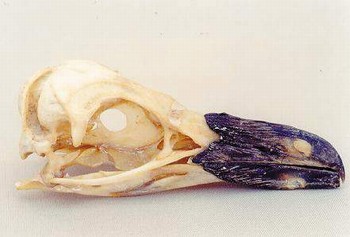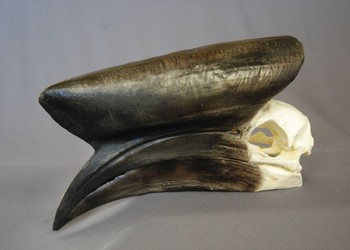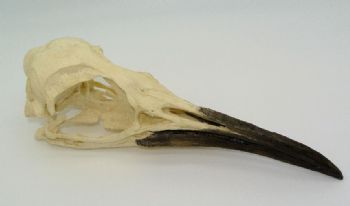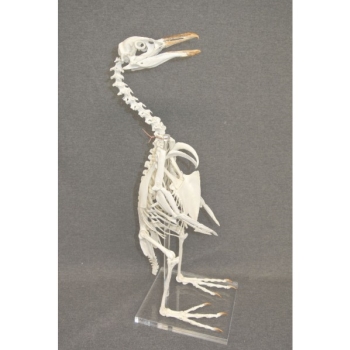Magellanic Penguin Skull Replica measures 5.5 in. Magellanic Penguin Skull Replica is museum quality polyurethane cast. 2-part skull (separate cranium & jaw). Made in USA. Our precise skull can be used as a birdwatching teaching tool, museum bird skull exhibit, home décor bird skull, or office décor skull.
The Magellanic penguin or Spheniscus magellanicus is a South American penguin, breeding in coastal Patagonia, including Argentina, Chile and the Falkland Islands, with some migrating to Brazil where they are occasionally seen as far north as Espirito Santo. It is the most numerous of the Spheniscus penguins.
Magellanic penguin or Spheniscus magellanicus are medium sized penguins which grow to be 24 to 30 in, tall and weigh between 6.0 to 14.3 lb. The males are larger than the females, and the weight of both drops while the parents nurture their young.
Adults have black backs and white abdomens. There are two black bands between the head and the breast, with the lower band shaped in an inverted horseshoe. The head is black with a broad white border that runs from behind the eye, around the ear coverts, chin, and joins at the throat.
Chicks and younger penguins have grey blue backs, with a more faded grey-blue color on their chest. Magellanic penguins can live up to 25 years in the wild, but as much as 30 years in captivity.
Young Magellanic penguin or Spheniscus magellanicus birds usually have a blotched pattern on their feet, which fades as they grow up into adulthood. By the time these birds reach about ten years of age, their feet usually become all black. The Magellanic penguin has very rigid wings used to swim under water.
Magellanic penguin or Spheniscus magellanicus feed in the water, preying on cuttlefish, squid, krill, and other crustaceans, and ingest sea water with their prey. Their salt excreting gland rids the salt from their bodies.
Magellanic penguin or Spheniscus magellanicus can regularly dive to depths of between 20m to 50m deep in order to forage for prey. Jellyfish including species in the genera Chrysaora and Cyanea were found to be actively sought out food items.











Reviews
There are no reviews yet.